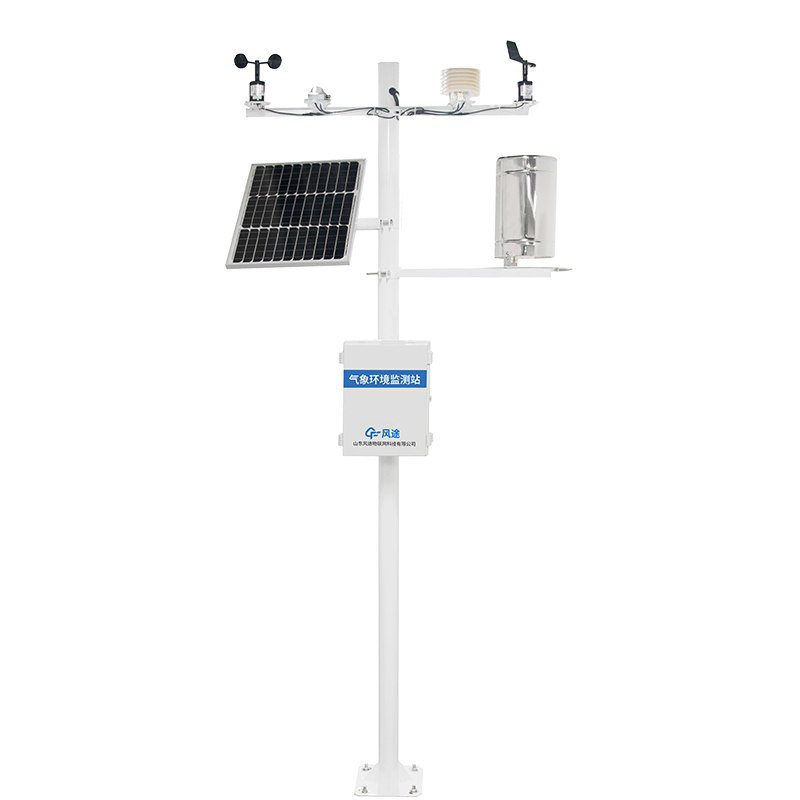Shandong Fengtu IOT Technology Co., Ltd
Sales Manager:Ms. Emily Wang
Cel,Whatsapp,Wechat:+86 15898932201
Email:info@fengtutec.com
Add:No. 155 Optoelectronic Industry Accelerator, Gaoxin District, Weifang, Shandong, China

Sales Manager:Ms. Emily Wang
Cel,Whatsapp,Wechat:+86 15898932201
Email:info@fengtutec.com
Add:No. 155 Optoelectronic Industry Accelerator, Gaoxin District, Weifang, Shandong, China
time:2023-07-06 11:11:45 source:Weather Station viewed:961 time
The five element weather monitor is used to monitor the five elements of weather, namely temperature, humidity, air pressure, wind speed and wind direction. It usually consists of a number of sensors and data loggers that can monitor and record these elements in real time. The five element weather monitor can be used in a wide range of applications such as weather forecasting, weather monitoring, agriculture, environmental protection, and for outdoor activities and sports where knowledge of weather conditions is required.
Its main advantages include:
1. High accuracy: The five-factor weather monitor uses high-precision sensors to accurately measure five weather elements such as temperature, relative humidity, air pressure, wind speed and wind direction.
2. Real-time: The five elements weather monitor can collect and transmit data in real time, reflecting the current weather changes.
3. Easy to move: The five element weather monitor is compact and easy to carry and install. It can be easily moved to the location where it is needed, meeting the needs of different occasions.
4. Reliable data: The data collected by the five element weather monitor is accurate and reliable, providing scientific weather data to help people better understand weather conditions and predict weather changes.
5. Widely used: The five element weather monitor is widely used in meteorology, agriculture, forestry, environmental monitoring, construction sites and other fields, and can help users to make accurate weather monitoring and predictions.
Monitoring meteorology is to understand and predict the development and changes of meteorological phenomena to help people make corresponding decisions and countermeasures to safeguard human production life and safety. Weather monitoring can provide information about weather, climate and air quality, and provide data support for decision-making in areas such as weather disaster warning, transport, energy, agriculture and environmental protection. At the same time, monitoring meteorology also helps to study climate change and weather patterns, explore the causes of weather and climate change, and provide a scientific basis for humans to respond to climate change.

Wind is a phenomenon of air movement in the atmosphere, and its speed and direction are influenced by a variety of factors, including topography, climate, and seasons. A wind rose is a type of chart used to represent the distribution of wind direction and speed; it shows the frequency and intensity...
The Radar Flowmeter is an all-in-one flow monitoring device with non-contact, continuous detection of flow velocity, water level, flow and other parameters. It is the use of radar plane microwave technology in a non-contact way to detect the flow rate, water level and other parameters of the water b...
The pH value of water is extremely crucial in both ecology and human activities. In ecological terms, it directly affects the survival and reproduction of aquatic organisms. A suitable pH environment is the basis for aquatic organisms to carry out normal physiological activities. Unsuitable pH will...
The Smart Water Quality Monitor is an intelligent system designed for real-time monitoring of water quality at water intake points, such as the FT-QSZ07 model.In the Smart Water Quality Monitor, water sampling is the first step to achieve water quality monitoring. Its purpose is to obtain representa...